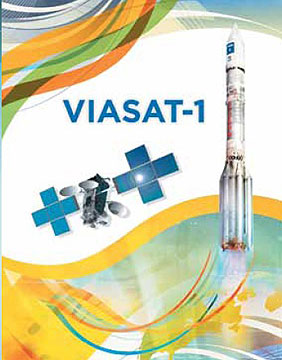[SatNews]ViaSat Inc. (NASDAQ: VSAT) has announced that the construction of the ViaSat-1 high-capacity satellite is complete.
Tthe spacecraft is now being prepared for shipment to the Baikonur Cosmodrome in Kazakhstan. ViaSat-1 is now scheduled for launch by International Launch Services (ILS) aboard a Proton rocket during the last week in September. The expected summer launch of ViaSat’s transformational Ka-band satellite was recently delayed when a solar array onboard the Telstar 14R communications satellite failed to fully deploy following its launch in May. Telstar 14R, like ViaSat-1, was built by Space Systems/Loral (SS/L) and uses many of the same solar array elements. An extensive, independent review of the solar array design, manufacturing, and operation was convened by SS/L, which resulted in a set of inspections, tests, and corrective actions for subsequent SS/L satellites, including ViaSat-1. That work is now complete on ViaSat-1 and the satellite has been declared ready for flight.
“We have been working closely with ILS to fit ViaSat-1 into a busy launch schedule that was disrupted by the delay,” said Mark Dankberg, chairman and CEO of ViaSat. “The satellite is now complete, the spacecraft is being prepared for shipment, and a final launch date will be confirmed very soon.”
A ViaSat-1 launch information page has been added to the ViaSat website. Visitors can view mission information, news updates, links to partner sites, and a live broadcast on the day of the launch. ViaSat-1 is designed to transform the economics and quality of service that satellite broadband can provide, with the capacity to serve the accelerating growth in bandwidth demand for multimedia Internet access over the next decade. The high-capacity Ka-band spot beam satellite has planned coverage over North America and Hawaii, enabling a variety of new, high-speed broadband services for WildBlue in the U.S. and Xplornet in Canada. With a capacity estimated at 150 Gbps, ViaSat-1 is expected to be the highest capacity satellite in the world.


